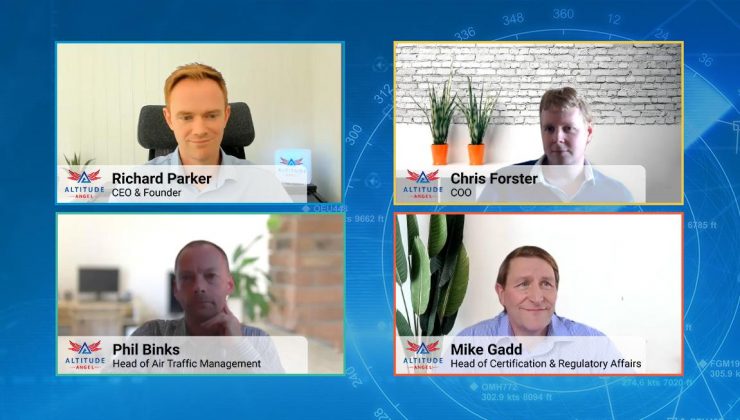By Jenny Beechener
A lack of industry standards in areas such as service quality, reliability and drone identification is hampering the deployment of UTM services globally, according to UTM service provider Altitude Angel executives speaking at a 21 July 2020 seminar organised by the company. COO Chris Forster called for faster implementation of drone services and warned against “waiting for standards to come along”. While recognising the role of standards he said: “From a commercial point of view, it is really important we don’t stifle the innovation and the ability to get products and solutions out there that can solve real problems today,” adding the pace of evolution “requires a more agile approach to realise commercial value”.
The company’s Head of Certification Mike Gadd explained how standards “provide a common reference point without driving away commercial aspects”. They also need to be acceptable to UTM and Air Traffic Management (ATM) and will continue to evolve.
From a technical standpoint, the industry is making good progress, but scaling up from individual operations to hundreds or even thousands of movements calls for standards around areas including communications and interoperability.
“UTM is a complex interaction of different systems involving different stakeholders,” said Altitude Angel CEO Richard Parker: “It’s about the gradual introduction of automation to airspace and many different actors are involved in this journey.” For this reason, Parker would like to see more focus on the definition of services. This would include service quality, reliability and specific criteria that allow users to select UTM services with the knowledge they will deliver effective results. “I don’t see anyone trying to solve those problems in a meaningful way, yet this is the most critical framework to have available now.”
Many companies are in the process of building UTM services. From a technical standpoint, the industry is developing rapidly and many players already offer creative services to support drone operations. “The problem is we all need to share one sky, so the question for a regulator or a policy maker is how many organisations do you want to allow?” says Parker. “Once you’ve decided on that, you can start to agree how to solve conflicts – what information needs to exchanged and how should companies should interact – rather than how to build the service. We’ve been dancing with this problem in our industry for five years and these are the big questions that will lead to implementation.”
A key element highlighted by Gadd is the need for conspicuity. “One of the first things you need is the identity of the aircraft. We haven’t yet defined what the identity is, how it is obtained, how it is protected and whether it is trustworthy. We have remote identity standards, but we are missing the core piece of how to use that information, and trust it, wherever you are in the world across all the players in the game.”
Multiple solutions are likely to be needed depending upon different applications and different countries. “It is important to recognise what a standard is for, and not over-use or mis-use it to solve other problems,” added Parker. “Standards are simply a tool, covering many different aspects, some technical and some procedural. They are a means to demonstrate compliance with a regulation or requirement. Standardisation itself is not the goal. The problem UTM companies are here to solve isn’t traffic management, it’s about the airspace and the integration of this traffic into the airspace, or put simply getting the industry off the ground and into the air.”
To achieve this, Forster believes the industry needs to work in a collaborative way to show what common standards will look like across their respective platforms through development and testing of services, and demonstrate what the industry means for UAVs and wider aviation market.
For more information visit:




